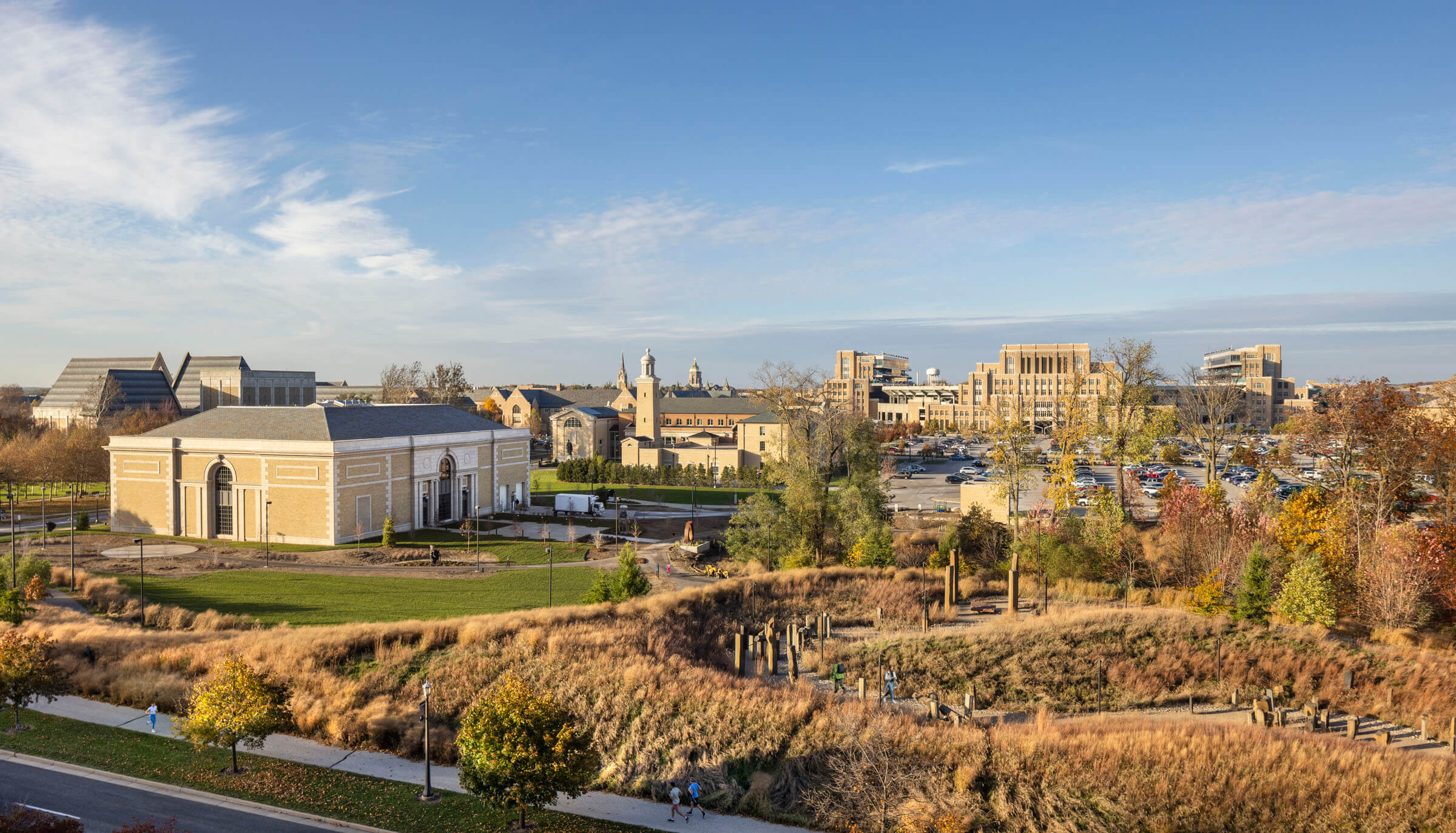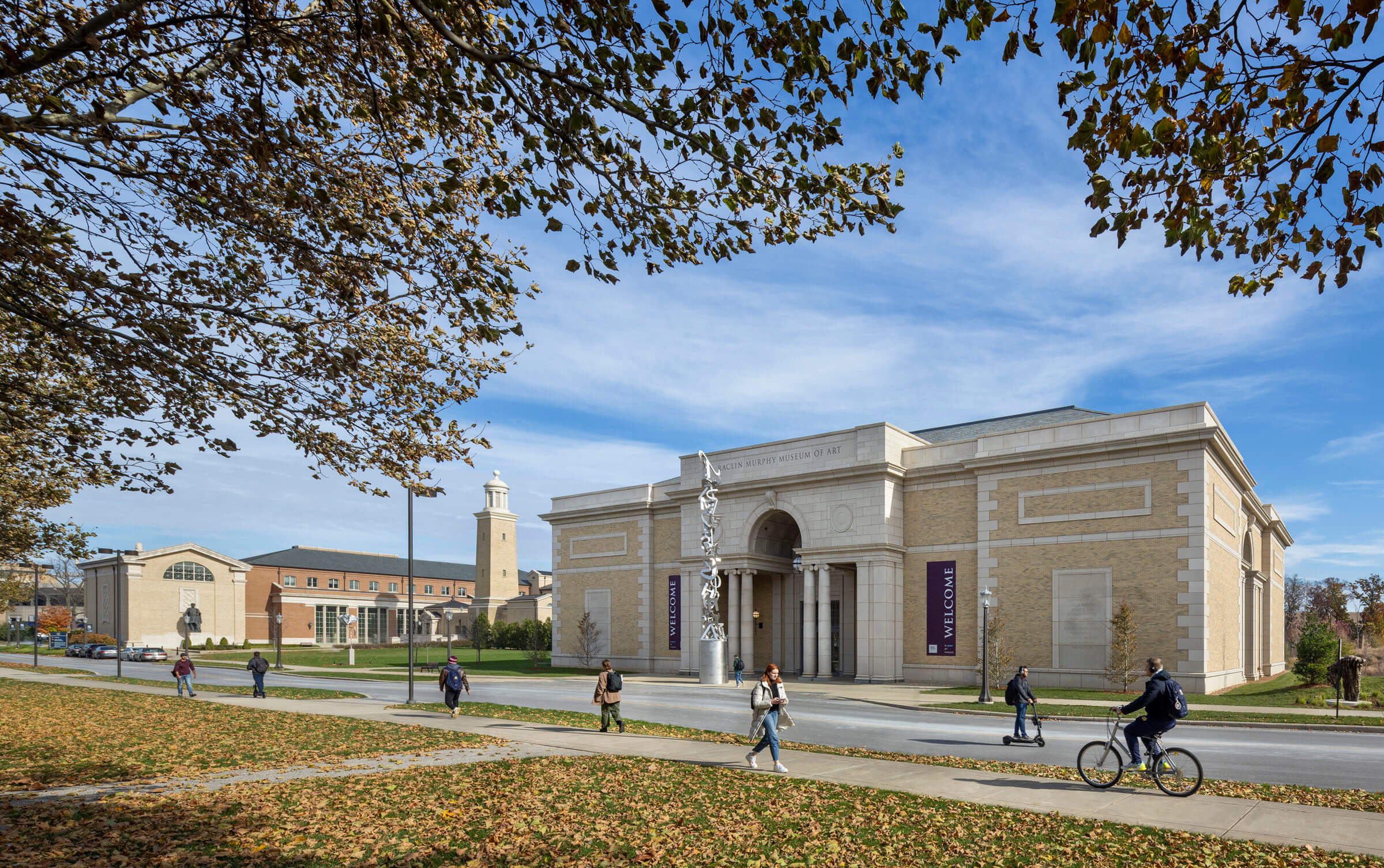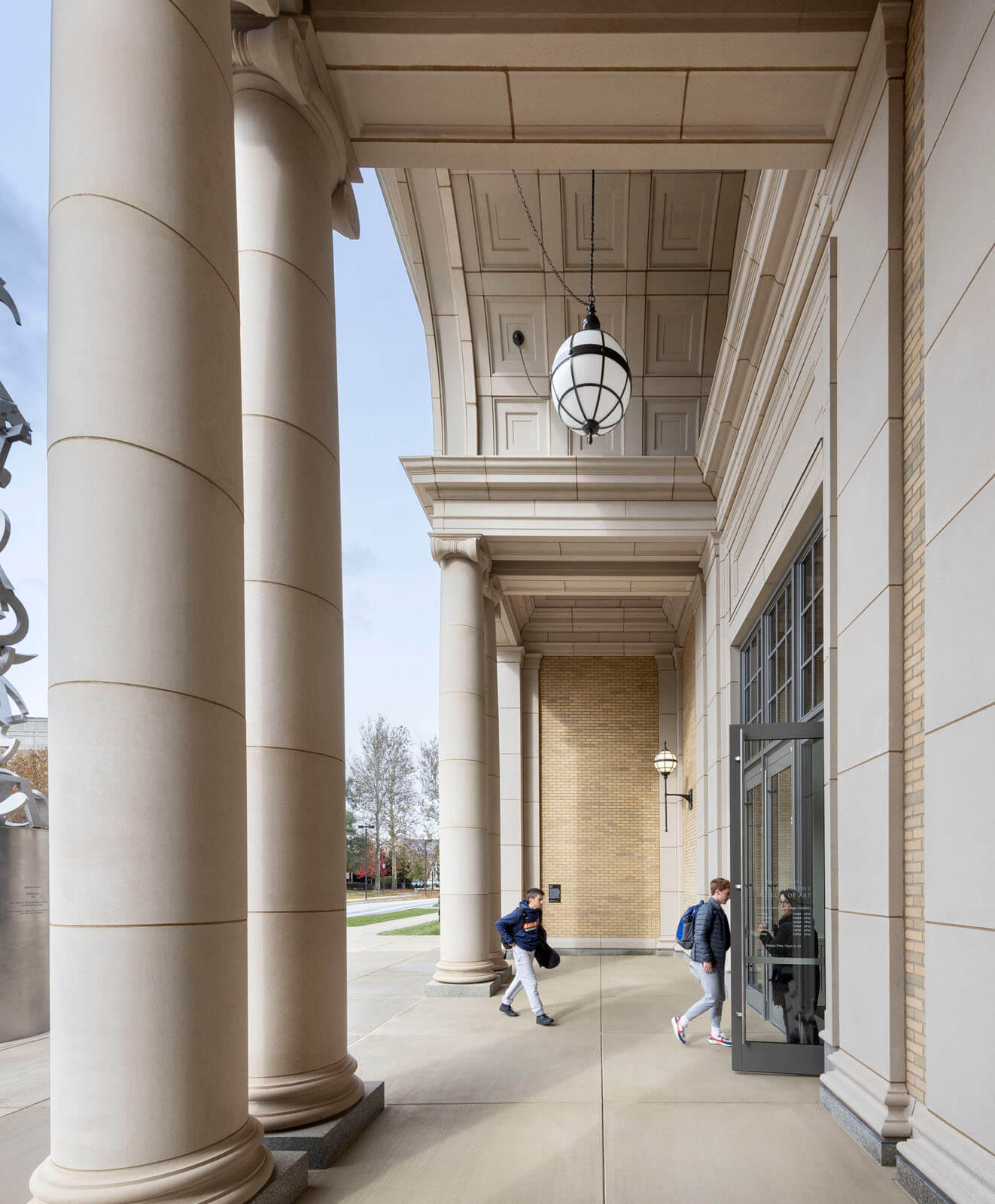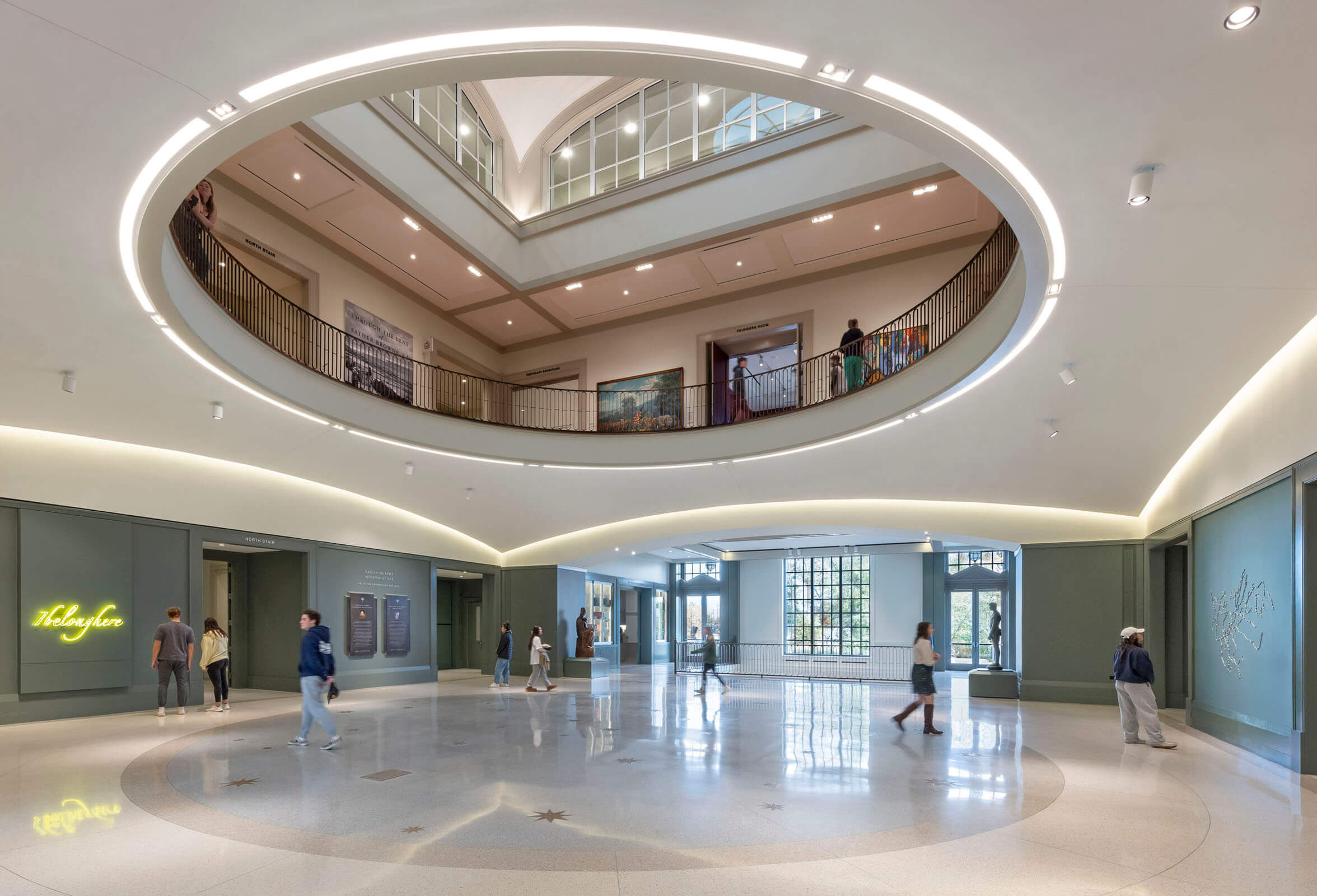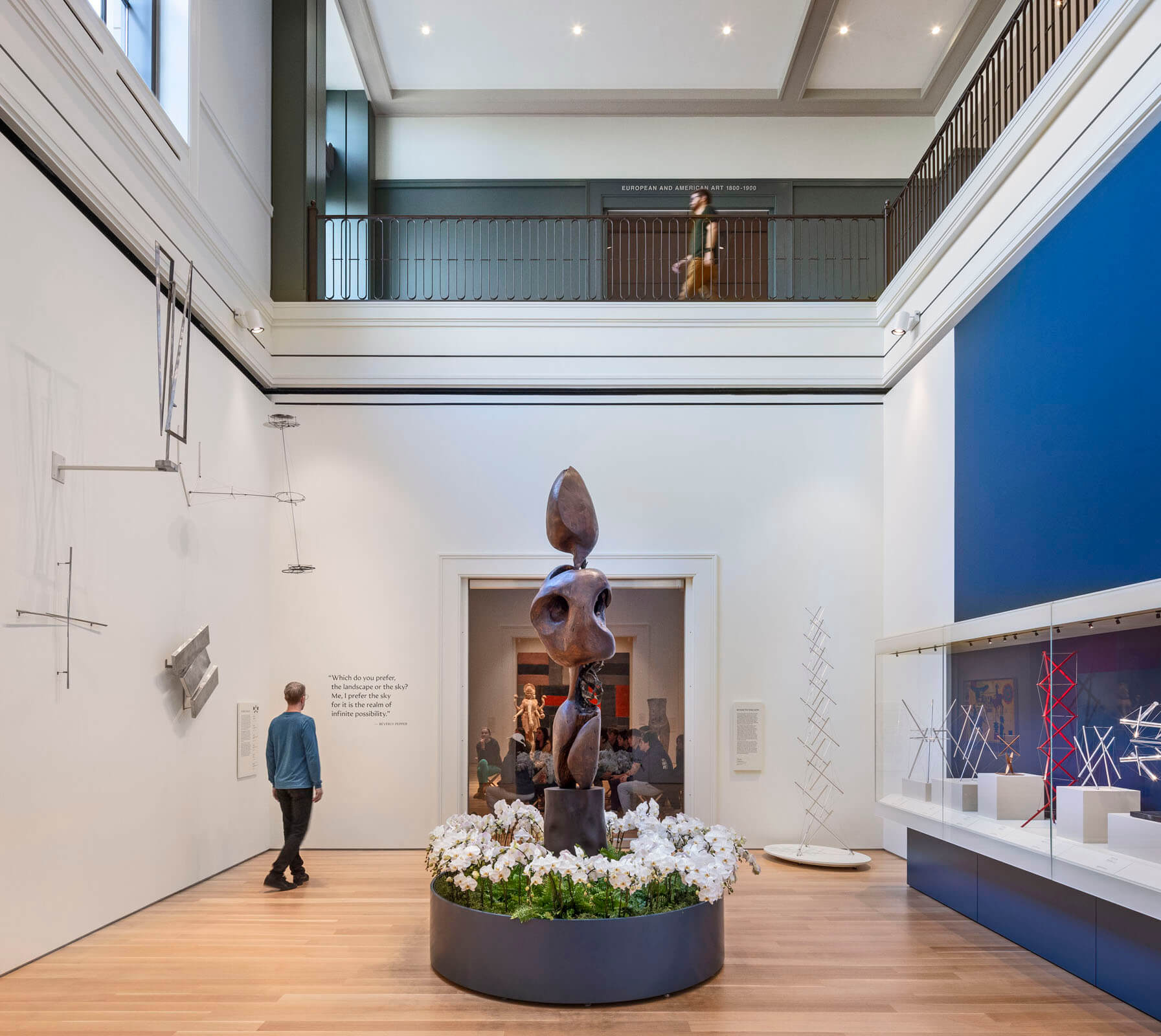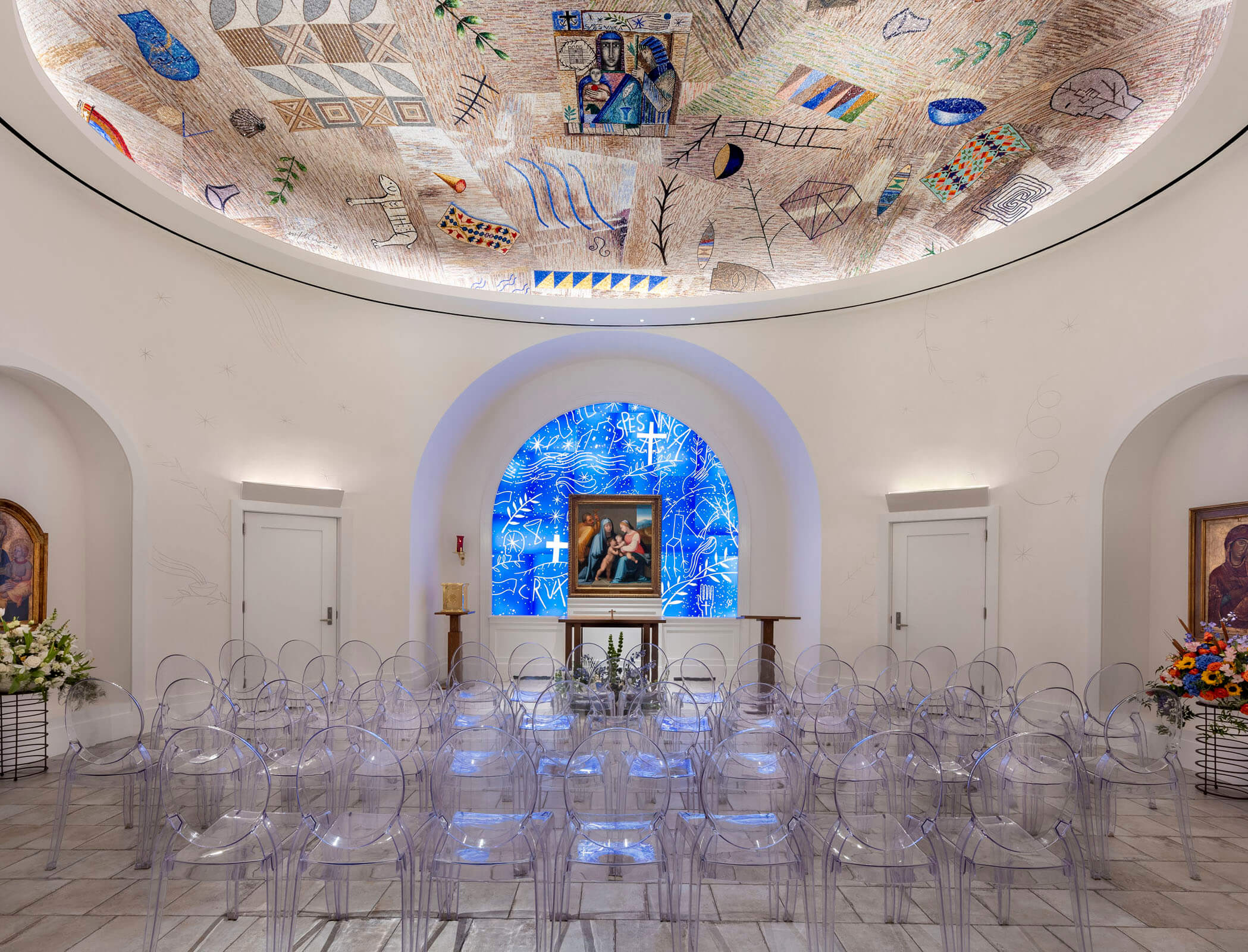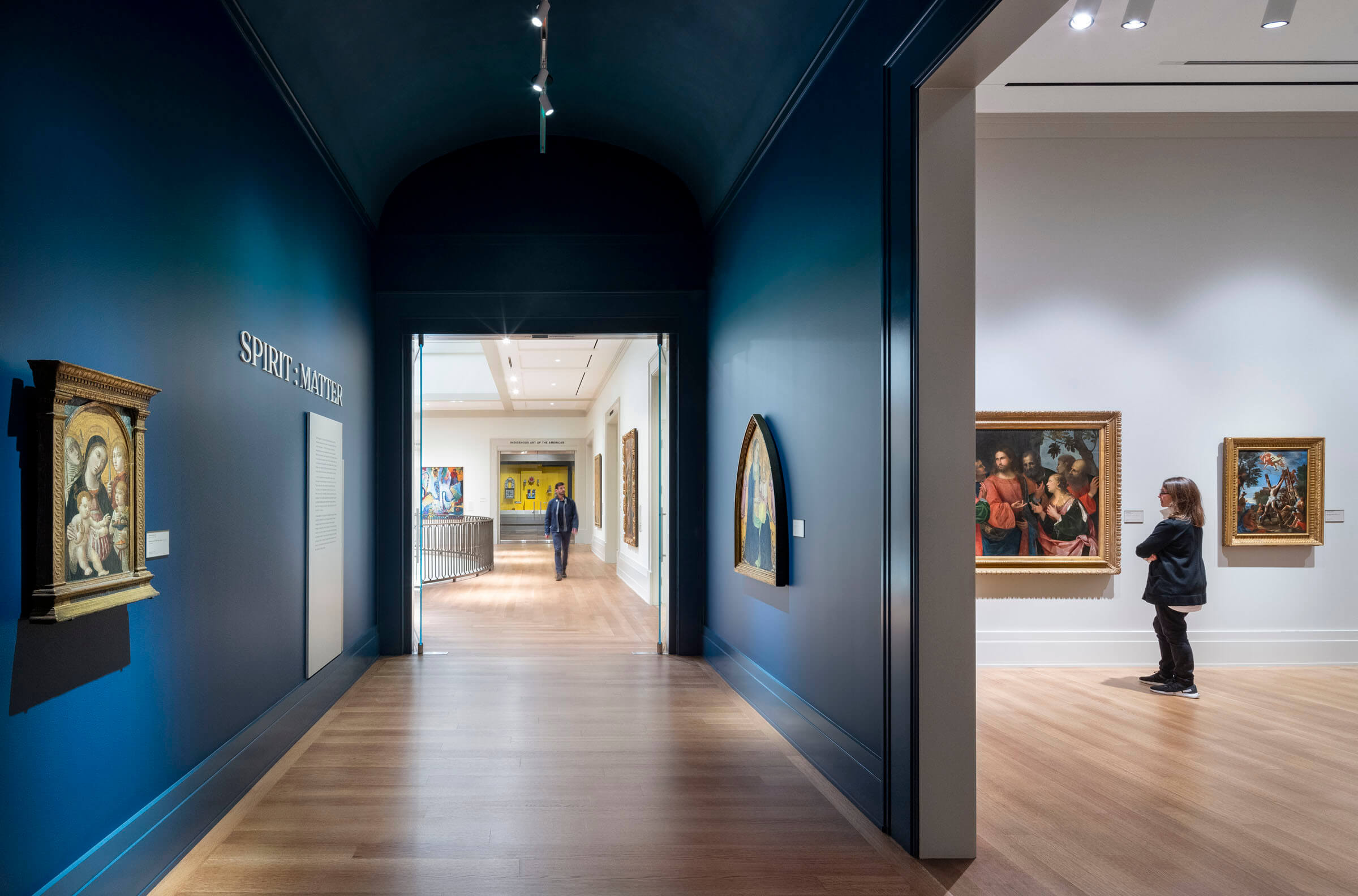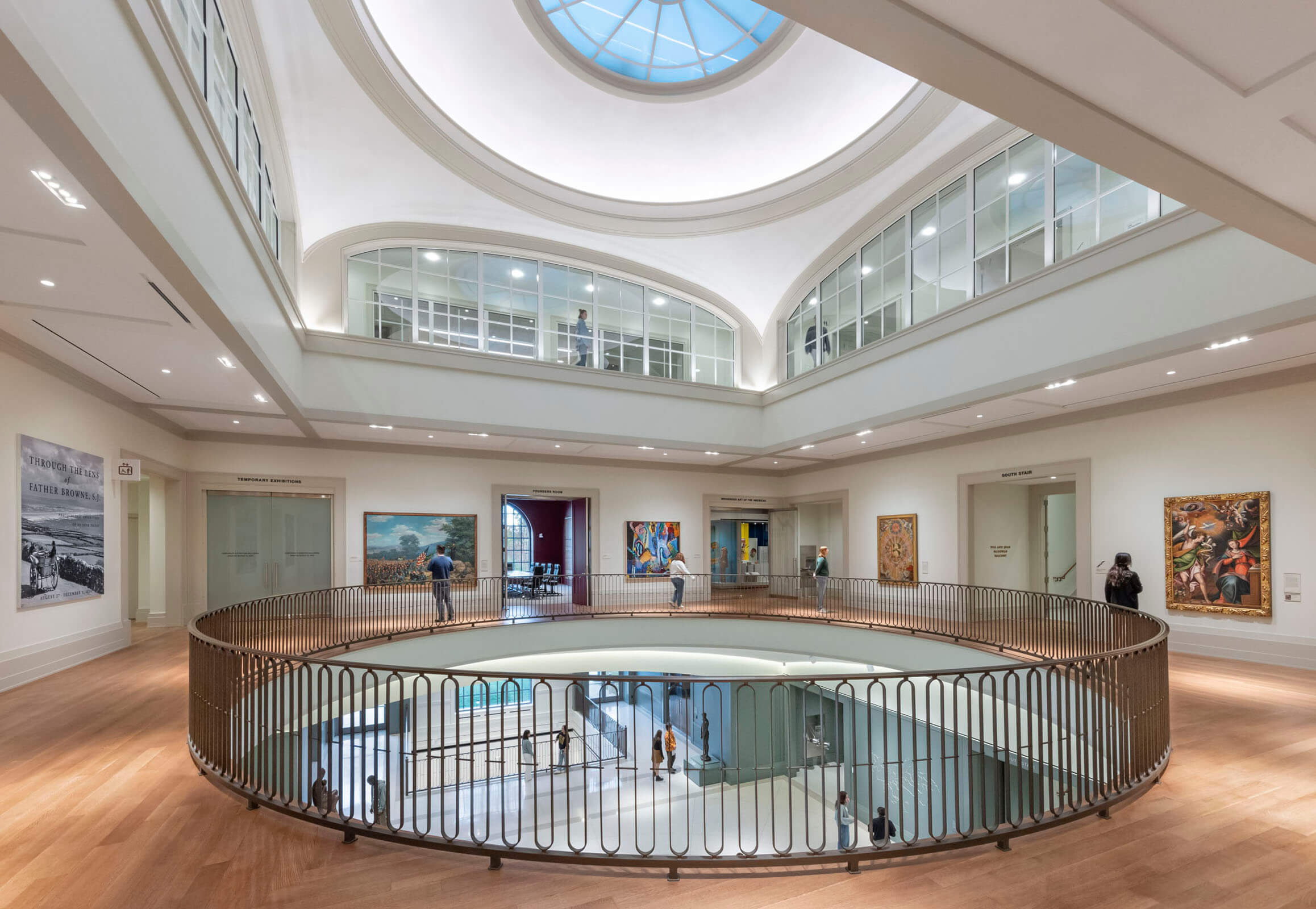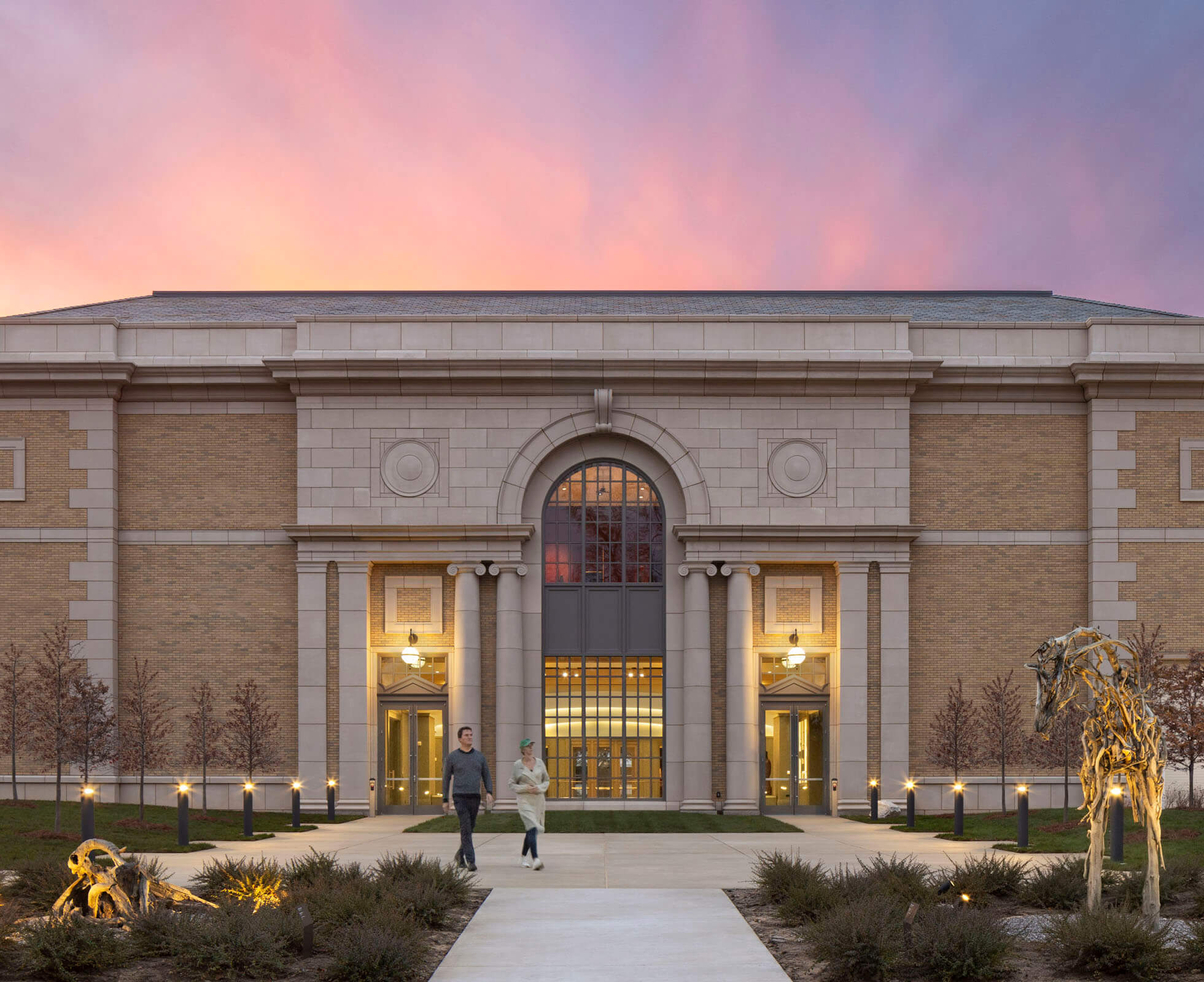
Raclin Murphy Museum of Art
The new Raclin Murphy Museum of Art, reaffirming the University of Notre Dame’s commitment to arts and arts education, occupies a prominent intersection where the school’s campus meets the City of South Bend, serving as an important resource for both the University community and its neighbors, as well as the wider academic arts community. Accommodating a dramatic expansion of public galleries, it enables a significant expansion in the Museum’s activities, including temporary exhibitions. The new Museum anchors a new arts district that also includes Walsh Family Hall, the recently completed home of the School of Architecture; the DeBartolo Performing Arts Center; and future buildings for the Departments of Art, Art History, and Design. The new museum has an intimate relationship with the landscape, most especially the Charles B. Hayes Sculpture Park, which was adapted where it meets the Museum by its original landscape architect, Michael Van Valkenburgh.
The Beaux-Arts-inspired Museum addresses Irish Green across an entry plaza featuring civic-scale outdoor sculpture and a tall arched portico entry. Inside, a light-flooded central atrium greets visitors with works from the Museum’s collections and orients them with views to the building’s upper and lower floors; two grand stairs connect the galleries on all levels. The main floor offers two additional galleries and a teaching gallery, along with a café opening to an outdoor terrace overlooking the sculpture park.
The lower level accommodates a sculpture gallery, open to the atrium above, along with contemporary art galleries. An object study center at this level provides a place for university students and researchers to engage with works from the collection as part of directed educational experiences.
Above, a balcony rings the atrium at the second floor, connecting additional galleries and temporary exhibition spaces; the highlight of this sequence is a chapel, intended as a quiet place for meditation and small gatherings, offering a unique curatorial opportunity to display important works from the Museum’s collection of religious art as well as a permanent installation by a prominent artist. The third floor is dedicated to educational programs for groups of schoolchildren, accommodating two studio spaces overlooking the atrium along with offices for the educators.
A planned second phase will provide additional galleries as well as a state-of-the-art works-on-paper study center, allowing greater access to the Museum’s collections, along with additional space for teaching, administrative and curatorial offices, collections storage, and an auditorium. This second phase will complete the vision for uniting the Museum’s expanded collections and staff in a prominent building overlooking Charles B. Hayes Sculpture Park, where it will serve as a gateway to Notre Dame’s new arts district where the campus meets the city.
